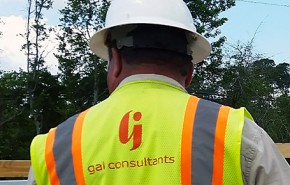Like many industries, those who work in occupational safety and health have their own set of terms and acronyms that help describe how well an organization is performing. Sometimes that lingo and alphabet soup is confusing to someone outside of the profession. This article will help you better understand what it all means so you can talk safety like a pro.
“Incident Rate”—Defined and Calculated
A frequent, generic term used to describe safety performance is “incident rate,” which is a calculation of the number of a particular type of incident that occurs per 100 workers. It is often used to compare an organization’s safety performance against a national or state average. Below, in the formula used to calculate incident rate, the number of incidents is multiplied by 200,000 hours—the number of hours worked by 100 fulltime workers. This creates a rate instead of just an isolated number and helps a small organization compare itself against a much larger one.
![]()
Organizations typically calculate their incident rates for a calendar year and then use a large database like the one maintained by the U.S. Bureau of Labor Statistics to determine the rate for other similar industries. Industry rates vary widely due to a number of factors—in particular the level of hazards faced by the industry. For example, people who work in logging have much higher incident rates than those who work in retail. So a company wants to make sure it compares its data against other similar industries, otherwise the metric isn’t very meaningful.
3 Types of Injury/Illness Incident Rates
It is not unusual for the term “incident rate” to describe a number of various metrics (each of which measures something different), so it’s important to know what each one means. There are three incident rates commonly used for injury/illness comparisons:
- Total Recordable Incident Rates (TRIR) include all injuries and illnesses that meet the Occupational Safety and Health Administration’s definition of “Recordable.” These injuries typically require medical treatment beyond first aid as well as those that require time off or restricted duty.
- Days Away/Restricted/Transfer Incident Rates (DART) include only injuries that require either time off, restrictions, or both.
- Lost Time Incident Rates (LTR) include only injuries that require time off.
Any incident rate greater than the industry average generally has a negative connotation associated with it. However, not all incident rates are created equal. The DART and LTR rates measure injuries that are more severe and require time off or restricted duty, while the TRIR is a measure of all types of injuries and illnesses, regardless of severity. So an organization with a TRIR well above the industry average and a DART and LTR well below average might have a safety program that is considered to be performing better than one with a TRIR below average and a DART and LTR above average.
Experience Modification Rate—Defined and Calculated
Another common metric is the Experience Modification Rate (EMR), which represents an organization’s Workers Compensation (WC) claims history as compared to other businesses in the same industry. This number is used by insurance companies to gauge both the cost of past injuries and future chances of risk. The lower the EMR, the lower the WC premiums. EMR is also calculated based upon multiple years of performance against companies that perform similar work, and it can be a good indicator of long-term safety performance:
The organization’s losses due to WC cases are where they are expected to be based upon the industry.
Losses that are less than what is expected. As a result, an organization gets a discount on their premium.
Losses are above what is expected and an organization pays a higher WC premium.
The EMR is also based upon the previous four policy years of losses, minus the most recent policy year—this can help reduce the impact of a few serious losses against a record of many more less serious losses. When looking at EMRs, it is also helpful to look at the trend over time. An EMR that is trending down can indicate improving safety performance, while the opposite is true of one that is trending up.
Lagging vs. Leading Indicators
Evaluating an organization’s safety performance using the metrics described above is helpful, but it is not wise to assume that a company with “good” incident rates and EMRs has an effective safety program. That’s because these types of metrics are called lagging indicators—they measure what has already happened. The absence of incidents does not mean the organization is working safely or that it is immune to future incidents. Sometimes incidents don’t occur simply because of luck or timing. For example, senior management at BP gave the crew of the Deepwater Horizon oil rig an award for the length of time they had gone without any incidents on the day of the explosion that killed 11 employees.
The use of leading indicators—those that measure an organization’s efforts at preventing incidents—are becoming more commonly used. Some examples include the number of hazards that are identified and corrected before an incident occurs or metrics that measure the number of employees who are directly involved in the implementation of the safety program. Near miss programs, worksite inspections, and participation in safety committees are examples of how an organization collects this information.
The bottom line is this: one number does not tell the whole safety story. Organizations that use a variety of metrics to measure their performance against themselves as well as their industry are the ones with a balanced approach that ultimately helps drive continuous improvement in the safety program.
![]() As Health & Safety Director, Bill Gourdie is responsible for spearheading initiatives that help GAI comply with all applicable health, safety, and environmental regulations; client requirements; and corporate policies and procedures in order to maintain the safest possible working conditions for all employees. He supports and advances GAI’s commitment to safety by coordinating the development, implementation, and continuous improvement of the company’s Safety & Health Program to enhance its effectiveness and improve performance results. Bill may be reached by phone at 412.399.5219 .
As Health & Safety Director, Bill Gourdie is responsible for spearheading initiatives that help GAI comply with all applicable health, safety, and environmental regulations; client requirements; and corporate policies and procedures in order to maintain the safest possible working conditions for all employees. He supports and advances GAI’s commitment to safety by coordinating the development, implementation, and continuous improvement of the company’s Safety & Health Program to enhance its effectiveness and improve performance results. Bill may be reached by phone at 412.399.5219 .


